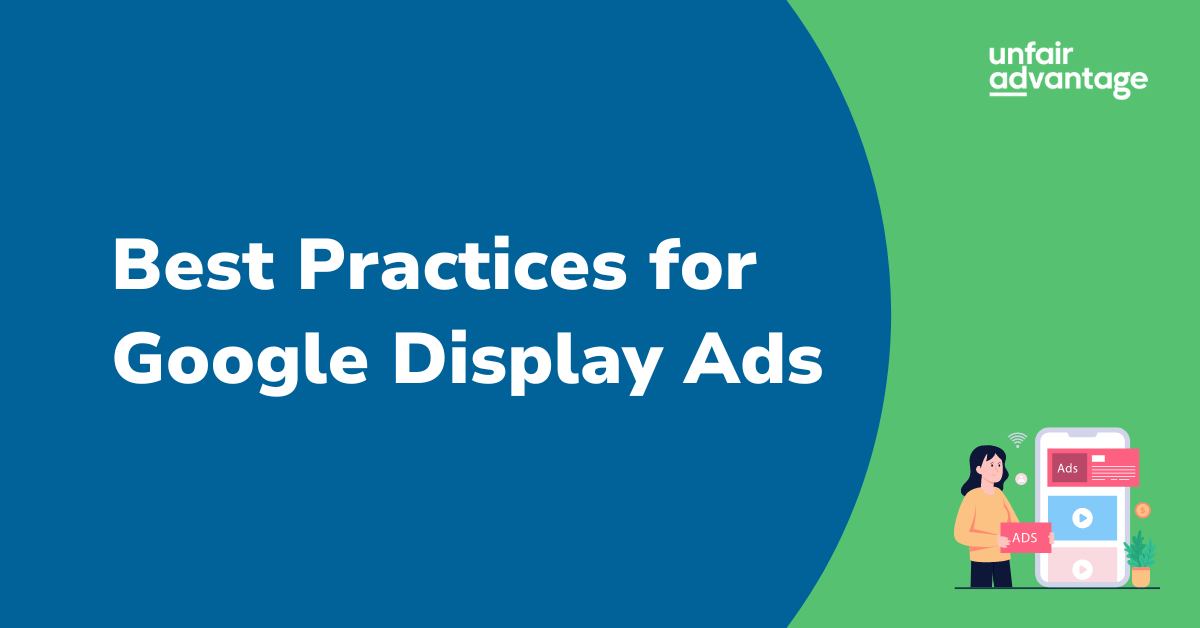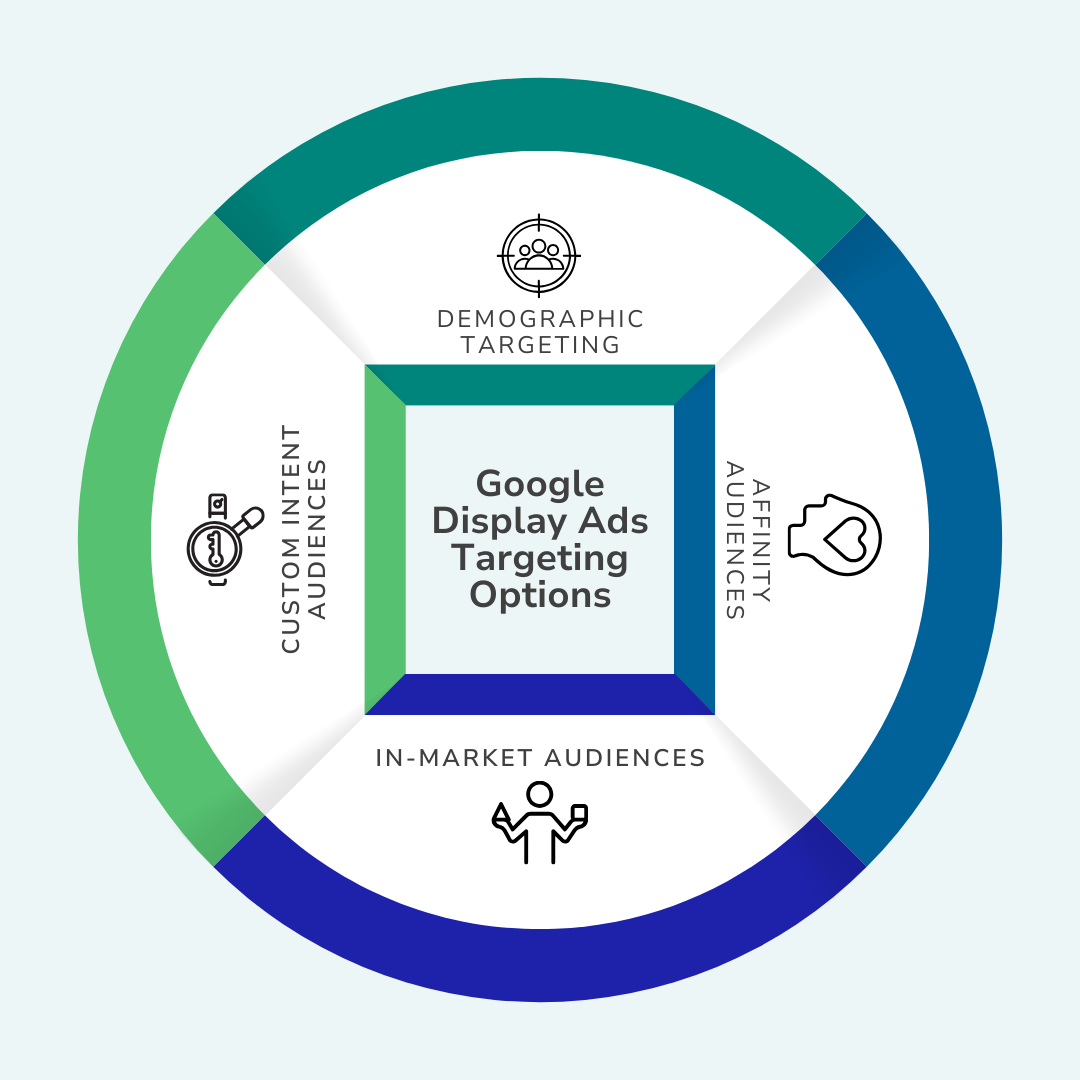
Best Practices for Google Display Ads
Google Display Ads offer a powerful way to reach a vast audience and drive meaningful results. To maximize your return on investment (ROI), it’s crucial to follow best practices that will optimize your campaigns. This guide regarding best practices for Google Display Ads will help you refine your approach and achieve better outcomes as you seek to test out Display ads for your business.
Set Clear Campaign Objectives
Before creating your display ads, establish clear and measurable goals for your campaign. Whether you’re aiming to increase brand awareness, drive traffic to your website, or boost conversions, having specific goals will guide your strategy and help you track success effectively.
Leverage Targeting Options Wisely
Google Display Ads provide a range of targeting options to connect with your ideal audience, making it easier than ever for businesses to reach the right customers at the right time. These advanced targeting options not only enhance the precision of your campaigns but also improve ROI by focusing your advertising budget on the audiences most likely to convert.

- Demographic Targeting: Narrow your audience based on factors like age, gender, and income.
- Affinity Audiences: Reach users with a strong interest in topics related to your products.
- In-Market Audiences: Focus on users actively researching or comparing products in your industry.
- Custom Intent Audiences: Create custom audiences based on keywords and URLs aligned with your business objectives.
Applying these targeting methods will help ensure your ads are seen by the right people, leading to higher engagement and conversion rates.
Create Compelling Ads
The creative elements of your ad are critical in capturing attention and driving action, playing a pivotal role in the overall success of your campaign. In a crowded marketing landscape, your ad needs to stand out and make an immediate impact on viewers. Well-crafted visuals, compelling copy, and a strong call to action can significantly enhance engagement and encourage users to take the next step, whether it’s clicking on your ad, signing up for a newsletter, or making a purchase. High-quality imagery and design not only attract attention but also convey professionalism and trust, making your brand more appealing to potential customers. Here are some tips:
- Use High-Quality Images: Ensure your visuals are clear, professional, and relevant to your message.
- Strong Call-to-Action (CTA): Make your CTA direct and persuasive. Phrases like “Shop Now,” “Learn More,” or “Get Started” encourage users to act.
- Consistent Branding: Maintain consistent branding across all your paid ads to build recognition and trust.
Utilize Responsive Display Ads
If you are limited in your resources for creating banner ads, the Responsive Display ads are the best choice for getting a campaign started quickly. Responsive Display Ads adapt automatically to fit various ad spaces, adjusting size, appearance, and format. By uploading a variety of assets (images, headlines, logos, etc.), Google’s machine learning will generate the most effective combinations, increasing your chances of optimal ad placement and broader reach.

Regularly Adjust Bids for Optimal Performance
Effective bid management is essential for controlling costs and enhancing your campaign’s impact. Regularly review your bids and adjust them based on performance data. Automated bidding strategies like Target CPA (Cost Per Acquisition) or Target ROAS (Return on Ad Spend) can also be beneficial in meeting your specific goals.
Leverage Remarketing for Higher Conversions
Sometimes it can be hard to justify spending money on Display ads for prospecting when the conversion rates can be much lower compared to traditional search campaigns. If you are wary of the return on Display ads, then a good first step can be utilizing Display ads for remarketing to users who have already interacted with your site to recapture their attention and bring them back into the marketing funnel.
Remarketing allows you to re-engage users who have previously interacted with your website or app. This strategy keeps your brand at the forefront and encourages users to return and complete a conversion. Tailor your ads based on different audience segments for better results.
Learn more about how remarketing can enhance your display strategy.
A/B Test for Continuous Improvement
Ongoing testing is key to improving your display ad campaigns. A/B testing different ad creatives, headlines, and CTAs will help you identify what resonates best with your audience. Test one variable at a time to gain clear insights into what drives better performance.

Track Performance and Optimize
Regular monitoring of your Google Display Ads campaign is vital for long-term success. Use tools like Google Analytics and Google Ads reports to track key metrics such as CTR (Click-Through Rate), conversion rates, and ROI. Based on these insights, make data-driven adjustments to improve your campaign’s effectiveness.
Adhere to Google’s Ad Policies
Ensuring that your ads comply with Google’s policies is crucial to maintaining a successful campaign. Non-compliance can lead to disapprovals or account suspensions, which can negatively impact your brand’s reputation and ROI. Stay informed about Google advertising policies to avoid any potential issues.
Conclusion
By following these best practices, you can significantly improve the performance of your Google Display Ads campaigns, leading to higher engagement, more conversions, and better ROI. Consistent monitoring, testing, and fine-tuning are key to sustained success.
For expert assistance in managing and optimizing your Google Display Ads, reach out to us. Our team of specialists is ready to help you achieve your marketing goals with precision and efficiency.
Tags: Houston PPC Services, Austin PPC Services, San Antonio PPC Services, Waco PPC Services, Forth Worth PPC Services, Dallas PPC Services

